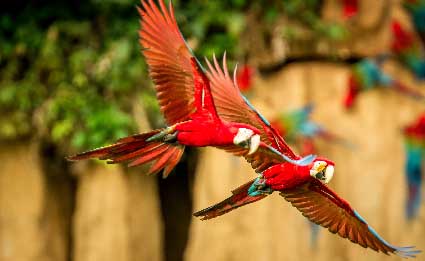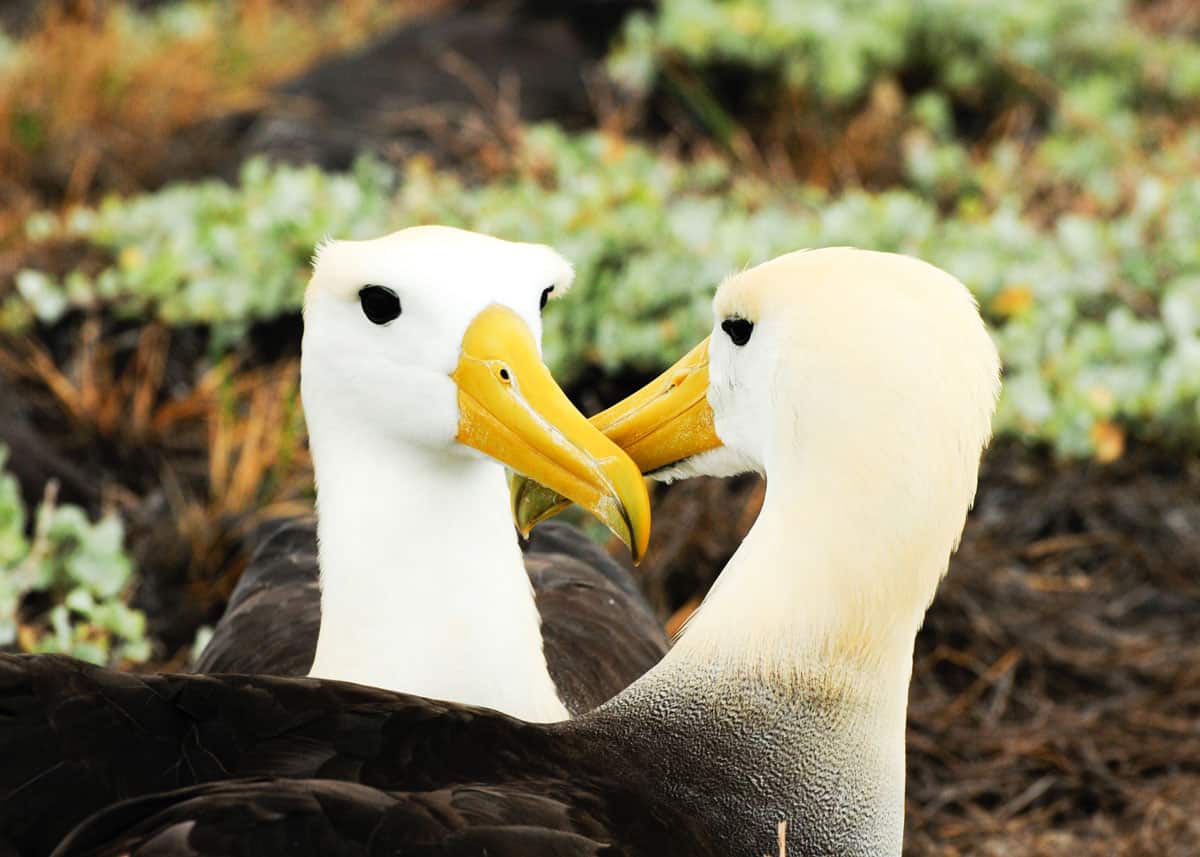
11 Facts About Waved Albatrosses
(phoebastria irrorata) in the Galapagos
Waved albatrosses are amazing, beautiful, powerful birds. With their big white and yellow heads, funny yellow bills, straight necks, brown backs, and their big brown wings and blue feet, they are gorgeous birds! Read on to learn where to see them, what they eat, and their cute little families.
1. They are the biggest birds in the Galapagos
With a wingspan of up to 8.2 ft (2.5 m), the waved albatross is the biggest bird in the Galapagos Islands. They are up to 3 ft (1 m) long and weigh up to 11 lb (4.9 kg) with the female being slightly smaller than the male. This means that a waved albatross is about as tall as your typical 4 year old!
2. They mate for life
Waved albatrosses mate for life, which begins with an elaborate mating ritual. The mating ritual of the waved albatross includes a lot of honking, beak clacking, and what looks like kissing. It’s actually really sweet.
Similar to sea turtles, waved albatross couples return to the same breeding grounds every time they reunite to mate – and the chicks will almost always return to the same place where they hatched. Check out point #8 to learn where this place is!
Watch on YouTube
3. They have a fishy diet
Waved albatrosses feed on squid, fish, crustaceans, and occasionally small birds and other birds regurgitated food. Waved albatrosses fish for squid at night when the squid swim near the surface of the water and the waved albatross can just swoop down and scoop them up.
4. Waved albatrosses drink saltwater
They drink salt water and have no problem processing it. If a person was stranded in the ocean, they would be in a tough spot because drinking sea water would be worse for them than not drinking any water at all. Seabirds, such as waved albatrosses, however, have a trick.
They can desalinize the seawater using specially designed salt glands located above their eyes with ducts leading down to their nostrils and expel the salt through their nostrils and down their bills. In essence, they get really runny noses and expel otherwise lethal amounts of salt. Unlike marine iguanas, waved albatrosses don’t sneeze out the salt, they just let it run out.
5. Only one chick
Waved albatrosses only lay one egg between April and June. It can take around two months for the fluffy brown chick to hatch. They will be adult-sized by that December and leave their parents in January. The chick will not return to Española to breed for up to six years.
6. They stuff their chicks
Adult waved albatrosses go on long fishing trips and need to keep their chicks fed. So, while they are away fishing, they catch and eat the fish – but they don’t fully digest it. The food turns into an oily, nutrient-rich meal for their chicks.
When they return to the nest, they pump over 4 lb (1.8 kg) of the oily food into the chick, causing it to swell up like a little brown balloon. The chick can hardly move until it digests all that food, but it keeps it filled up while the adults are away fishing.
10. They have an interesting symbolic meaning
Some people believe that if an albatross follows your ship it is a sign of good luck, but if you kill it that would bring bad luck and curse the ship. A lot of the superstitions surrounding the albatross comes from The Rime of the Ancient Mariner by Samuel Taylor. While superstitions are a little outdated, there is no question that the waved albatross is an amazing bird that doesn’t need anything to validate it!
11. They are kleptoparasitic
Waved albatrosses (like magnificent frigatebirds) practice kleptoparasitism – stealing food from other birds, such as blue-footed boobies. They are the only albatrosses known to regularly indulge in kleptoparasitism.
Explore our Birding Watching Trips

Birds of the Ecuadorian Amazon
Explore the amazing biodiversity of the Amazon Rainforest accompanied by a bird specialist guide
Ecuador Phone: (593) 2-3801125 / 2-3801149 Email: info@latinrootstravel.com Skype: latinrootstravel.ecuador Latin Roots Travel Av del Establo y Calle E, Centro Corporativo Financiero Site Center, Torre 3, Oficina 107, Quito – Ecuador
Powered by Auveron Studio



